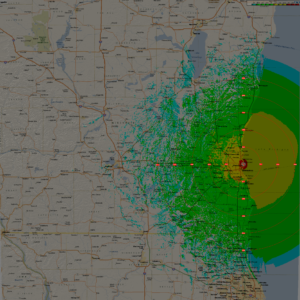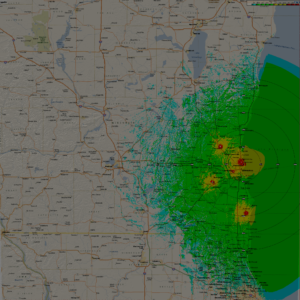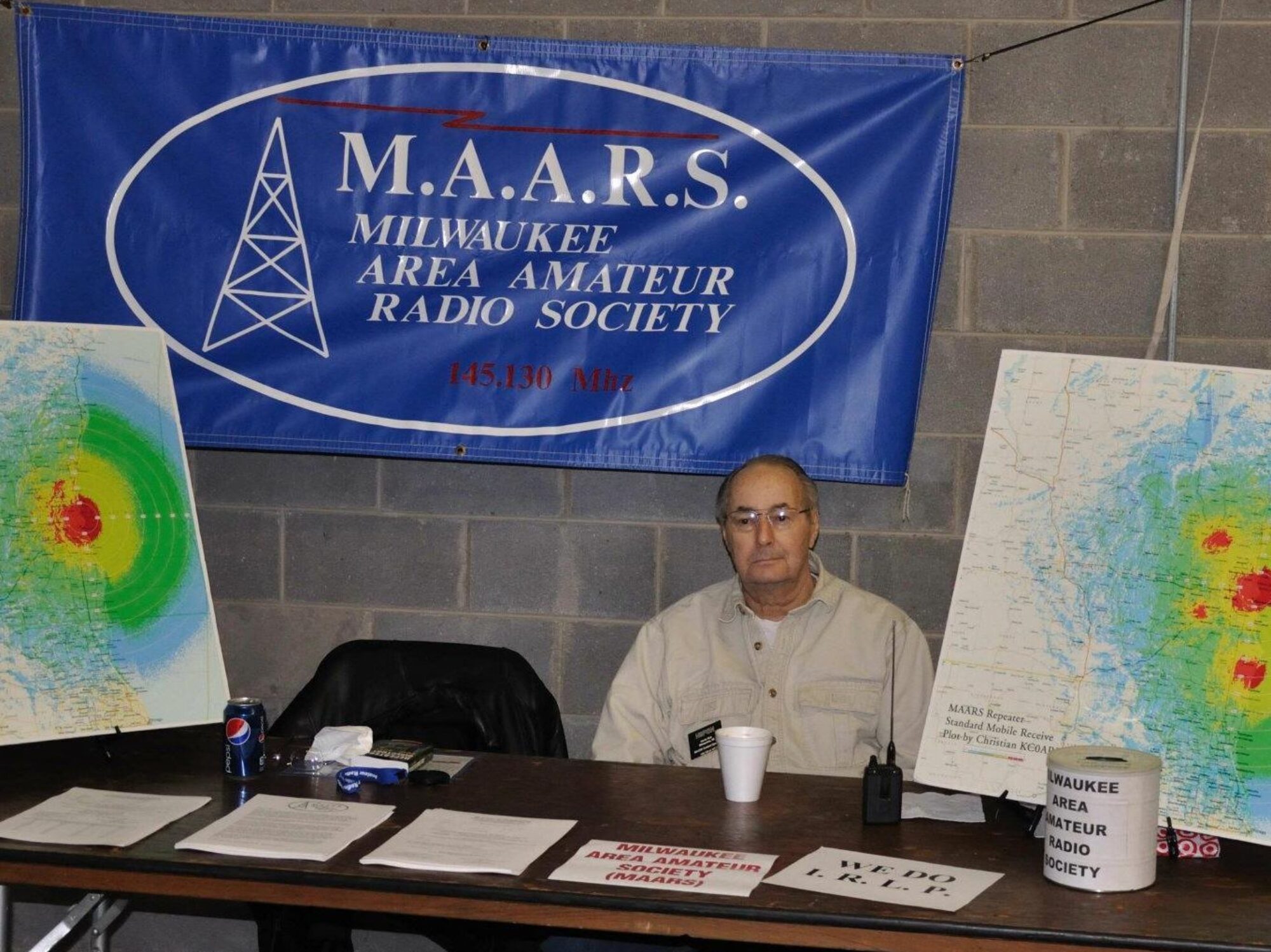MAARS was formed in May 1980, to support the migration from Chuck’s local-area repeater into the large regional system it is today. Today, we utilize several receive sites scattered in SE Wisconsin, along with IRLP, to offer our users a balanced repeater system.The MAARS repeater is a complex machine. It lives at the top of a 250 foot tower, atop of a 250 foot building (500 total feet!) at the UW-Milwaukee Campus, Milwaukee Wisconsin. The repeater is on 24 hours a day, 7 days a week, although the functionality of the repeater changes throughout the day due to changing operational requirements, such as the swapnet, or for a weather net.These pages describe the physical components of the repeater system.
We first look at the main site, which features two parts: inside hardware and outside hardware. The inside hardware involves the receive and transmitter components, the controller, and IRLP computer. The outside hardware discusses the link antennas, and the transmitter antennas. Each of our receive sites are then discussed, followed by our 440 receiver, and finally, IRLP which “listens to the internet”.
Each of the subsections hold coverage maps of how well the site hears remote signals.For those who are curious, here is how the repeater works. Your radio transmits to one (or more) of our receive sites. The MAARS receive sites then re-transmit your audio to the main site which has multiple receivers that detects your signal. Each active audio line is then evaluated by our Voter, where the best signal is selected. That audio is then passed to the repeater controller, where it is sent to the transmitter. The transmitter sends your audio out to others who are listening to you.
Feel free to email us if you would like further information.



